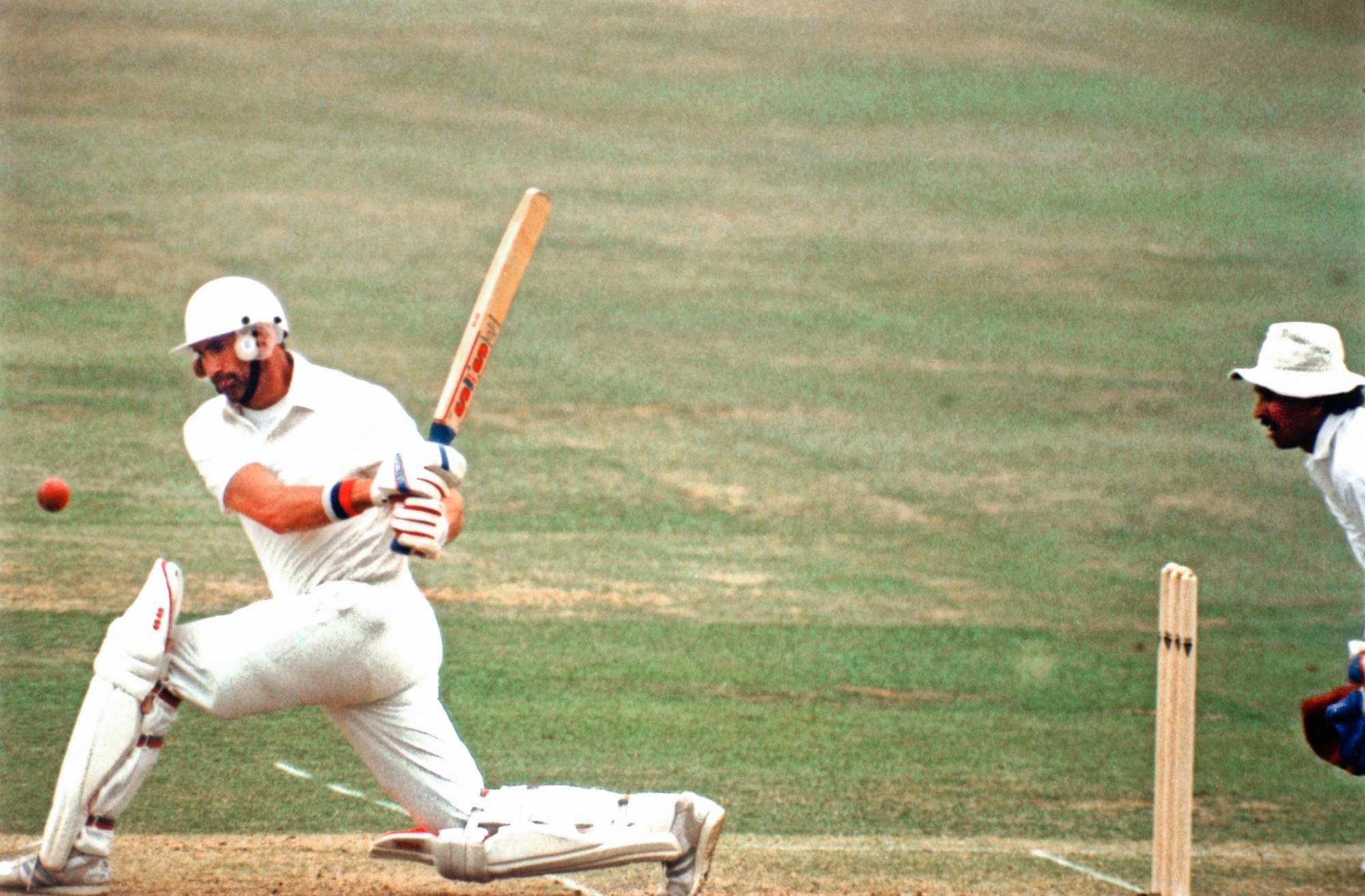This article is taken from the May 2024 issue of The Critic. To get the full magazine why not subscribe? Right now we’re offering five issues for just £10.
Just before tea on the second day of the Lord’s Test match in 1990, Graham Gooch nudged a single that took his score to 299. The England captain then removed his white helmet and placed it in front of the stumps before sloping off for a cuppa. The implication was clear: “I’ll be back.”
It had been 64 years since Jack Hobbs joined Percy Holmes to become the only batsmen to reach 300 at the Home of Cricket, and Gooch became the third after the break. “I was so tired,” he said. “But I was determined to get there. You get so few chances to make a triple hundred.” No one outside Lord’s saw it, since the BBC had cut away for the 4.05pm race from Ascot.

Gooch reached 333 before his 10½-hour innings against India came to an end, a symmetrical score that pleased his bat sponsor (the SS Turbo 333 played a role in an arch of bats at my wedding 16 years later). Having made 177 for Essex the previous week, he was in purple form, based on a careful, methodical approach. “I broke the innings down into small chunks: session by session, over by over, ball by ball,” he said. “Never look too far ahead.”
Later, as England’s batting coach, Gooch exhorted players to push for what he called “daddy hundreds” — scores of 150 or more that could win, or seldom lose, a match — but a “granddaddy” is a rare beast. First-class cricket began in 1772, and there would be almost 2,000 matches before WG Grace made the first triple hundred in 1876. Grace made the second six days later, and Gooch’s was the 102nd. Over 250 years, they have come along about once every 300 matches.
Some great players never got close. Sachin Tendulkar’s first-class best was 248, Steve Smith’s 239, Ricky Ponting’s 257. To make a granddaddy requires talent, determination and concentration, but also a lot of luck. The fielding team only has to be lucky once. Gooch was dropped by the wicketkeeper on 36.
Some have the granddaddy knack. In 1927, Bill Ponsford made what remains a record score at the Melbourne Cricket Ground of 437, beating his 429 five years earlier. The Victoria opener also made 352 and 336 at the same ground. Don Bradman made triple centuries in Tests at Headingley in 1930 and 1934. Grace added to his two in a week in 1876 with another 20 years later. Now there is Sam Northeast, a journeyman who has never had a sniff of an England cap.
In the first match of this county season, Northeast made 335 against Middlesex at Lord’s, erasing Gooch’s record after 34 years, to go with the 410 he made against Leicestershire in 2022. Northeast of Glamorgan (does that make his nickname “Worcestershire”?) was told of the record by an MCC member as he went out to resume his innings after lunch on 284, but he says he didn’t think about it until he had reached 330. Having made it, he declared at the end of the over.
Impending records can be debilitating. Brendon McCullum took 39 balls to move from 280 to New Zealand’s first Test triple hundred in 2014, aware that 23 years earlier Martin Crowe had got out for 299, a blemish that Crowe said “tore at me like a vulture pecking dead flesh”. Mark Taylor declared when he was on 334 against Pakistan in 1998 because he didn’t want to pass Bradman’s best score for Australia. (Matthew Hayden had no such qualms five years later.)
E.W. Swanton, the fabled Telegraph correspondent, unsuccessfully told the Kent captain in 1996 to declare as Matthew Walker was approaching 270, the record at Canterbury held for 73 years by Frank Woolley, Swanton’s hero. Walker made 275.
When Gooch played down the wrong line to end his great innings in 1990, he was told off by Micky Stewart, the England coach, for getting out within sight of the then world record of 365, held by Garry Sobers. Perhaps Stewart was mindful of John Edrich, his former Surrey team-mate, being denied a crack at the record in 1965 when M.J.K. Smith declared against New Zealand with Edrich on 310.

Sobers’ record finally fell 30 years ago, when Brian Lara made 375 against England in Antigua. Mike Atherton, the England captain that day, said there was an “air of inevitability” once he passed 150. Lara gave just one catching chance, in the nervous 290s, but the left-hander could have been out with the record-making stroke.
As the crowd went mad, Jack Russell, the wicketkeeper, noticed that Lara had grazed his stumps and the off bail was out of its groove. It sat resting on the edge of the stump, Russell hoping it wouldn’t fall since he would have to appeal. “I don’t reckon I’d have made it off the island,” he said.
Luck was on Lara’s side, though, as it was six weeks later when, playing for Warwickshire, he was dropped by the Durham wicketkeeper on 18 and went on to make a record first-class score of 501 (Hanif Mohammad, poor chap, was run out for 499 in 1959).
Yet what use are giant scores if you don’t win the match? Lara’s 501, like his 375 and his subsequent 400 against England in 2004, like Bradman’s 334 and Northeast’s 335 and both of Grace’s triples in 1876, came in a drawn match. Gooch followed his 333 with another mathematically pleasing score of 123 in the second innings, scoring so quickly there was still time left for England to secure the win. For that, Goochie remains the greatest granddaddy.
Enjoying The Critic online? It's even better in print
Try five issues of Britain’s newest magazine for £10
Subscribe



